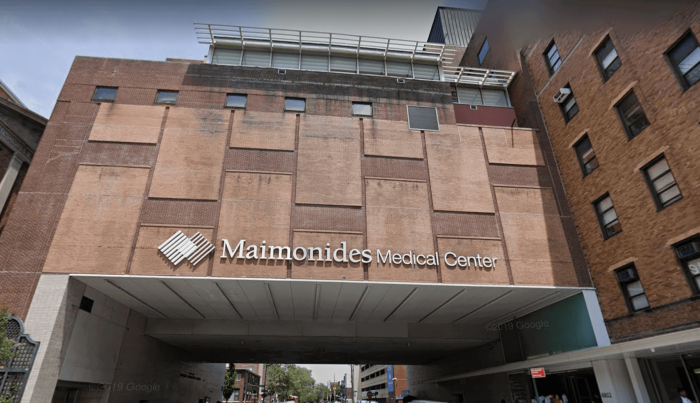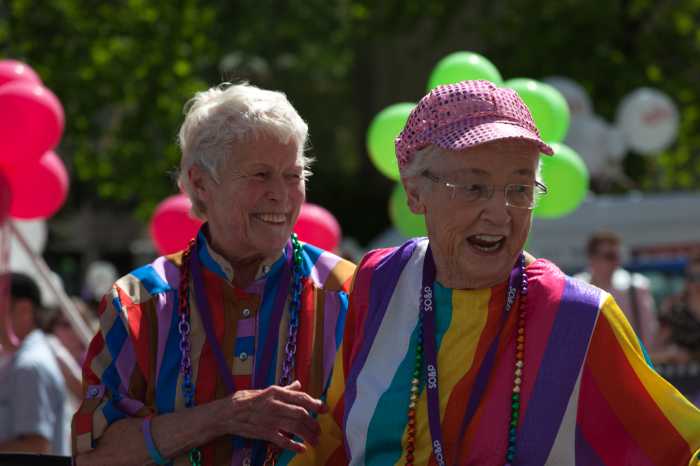By Jaclyn Marinese
Members of the Bowery Residents Committee display art work
Without the ability to paint, Taurus Reid doesn’t know where he might be today. A former resident of the Bowery Residents’ Committee’s Reception Center, a transitional shelter located at 324 Lafayette Street, Reid now lives independently and is in his junior year at the Pratt Institute.
Reid, 24, was one of several contributors to an exhibition entitled the ‘The Art of Healing,’ a recent one-evening presentation held at the Reception Center. It grew out of an art therapy program.
Reid discussed one of his works, portraying a young man with outstretched arms.
“During some hard times I looked up and looked to God, and that is a representation of Jesus Christ to me…looking over,” said the sweet-faced young man who towered over most people in the room. In the painting, the man is surrounded on one side by a murky colored cityscape and on the other by a warm and glowing colorful arrangement.
“The sun will come out you know, “ he said. “Things are gonna get much better. That was my whole thing with that piece right there.”
Like Reid, all of the artists represented at the exhibit are current or former residents of the Reception Center. For many, these works represent their first attempt at creative expression. The paintings illustrate the struggles and the emotions of a population often overlooked in New York City.
Currently more than 38,000 people are in the city’s shelter system, according to the Department of Homeless Services 2003 statistics. The Bowery Residents’ Committee, is a voluntary, non-profit organization started on the Bowery, in 1973 to help the homeless, chemically dependent, psychiatrically disabled and those afflicted with HIV/AIDS.
With ‘The Art Of Healing,’ artists were given no suggestions, other than to try and tell their stories through art.
“When you’re getting clean and coming off the street everything that you know, we’re taking away from you,” said Brian Moriarty, Program Director of the BRC Reception Center. “You have have no coping mechanisms left and this provides one avenue to release the energy and emotions, without going back to the streets or stopping your medication.”
The aim of the exhibition was to giveclients a chance to see their work presented publicly and to empower clients by offering them a sense of accomplishment.
“It’s very positive for them,” said Heather Jones, an art therapist at the reception center who came up with the idea for the event. “Even people that can’t actually do something will come to the group anyway because they like to see other people do the work.”
Alongside the paintings and drawings, many of the artists displayed some of their thoughts.
“People always believe that homeless people can’t do anything,” read the words of a 55-year-old man from Harlem who is now in recovery for the first time. “It’s important to see that there are a lot of people out there who are homeless and have a lot of skills and talents.”
Special guest artist, Danny Simmons, founder of the Rush Philanthropic Arts Foundation, read an excerpt from his novel “Three Days as the Crow Flies.” Simmons, brother of hip-hop entrepreneur Russell Simmons, is a self-described recovering addict and said that art and family have been the being saving factors in his recovery.
“I use the arts to try and help people and Russell uses music and we are expanding out into other things,” said Simmons. “But our core mission is basically: ‘when we can do something to help somebody…why not?’ First of all it makes you feel good to do it and second of all it might help somebody and change their lives.”
For artists like Taurus Reid, the power of producing art has done just that. Smiling calmly before a collection of his works, he said that he would love to make a living out of his art someday, but regardless he will always continue to paint because of its healing elements.
Despite below freezing temperatures one recent evening, a crowd still gathered to experience ‘The Art of Healing’ exhibit. Clients, social workers, activists and interested community members piled into one of the BRC Centers on Delancy Street that night to share in a moment of learning and healing. For onlookers it was a time to understand the needs and feelings of the most vulnerable members of our communities, especially during these winter months. For the clients it was a time to learn about a sense of self worth and healing by realizing that they are not the forgotten faces of our city, but are appreciated and recognized for their important contributions. Those at the BRC hope that ‘The Art of Healing’ project will help all involved to to realize the power creativity can play in their everyday lives, giving them the strength to change their worlds for the better.
Reader Services
































